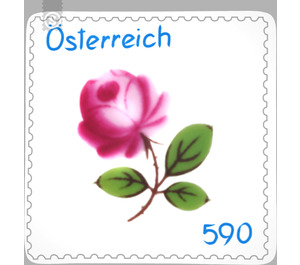porcelain - Austria / II. Republic of Austria 2014 - 590 Euro Cent
Theme: Art & Culture
| Country | Austria / II. Republic of Austria |
| Issue Date | 2014 |
| Face Value | 590.00 |
| Edition Issued | 150,000 |
| Printing Type | Screen printing on porcelain |
| Stamp Type | Commemorative |
| Item Type | Stamp |
| Chronological Issue Number | 2464 |
| Chronological Chapter | OOS-OE2 |
| SID | 299343 |
| In 76 Wishlists | |
Perfect in form, timelessly beautiful and made by hand - this is how the world-famous Viennese Augarten porcelain presents itself for almost 300 years. Exquisite coffee and tea service, stylish vases and lamps as well as artistic figures delight collectors and esteemed people alike - and that for generations. The valuable porcelain with the striking blue binding sign as a signing is also used in the service of the Republic of Austria: whether as a service in the Hofburg and in the Federal Chancellery or as a special state present at highly official occasions. For the series "Classic Trademarks", an extraordinary porcelain stamp has been created, adorned with the "Viennese Rose". From the naturalistic bouquets of the baroque through classicist flower ornaments to the playful rose motifs of the Biedermeier period: the rose has been one of the most important motifs of Viennese porcelain painters since the foundation of the Viennese porcelain manufactory in 1718. The famous "Viennese rose" is based on designs of the imperial manufactory around 1740 back. In 1924, Edwin Breideneichen, a long-time head of the painting department, adapted the motif of the Purple Rose of Vienna and adapted it to the taste of his time - Art Nouveau. The result was a stylized rose blossom, precisely applied brushstrokes and fine shades with a brush gave her a simple and delicate elegance; she became one of the most sought after designs of the manufactory. Today, the assortment with classic "Viennese decor" includes various porcelain objects and enjoys great popularity in Germany and abroad. For the production of a porcelain stamp, both a separate process and a special tool had to be developed, because only then could the production of the relatively large number of marks be managed in the given time. Since the usual gypsum molds can be used only about thirty times, the stamps were not manufactured by casting with casting compound, but pressed with a firmer form ("rotating mass" or "molding compound"). Subsequently, the porcelain flakes were fired in the so-called Glühbrand at 960 degrees Celsius for 24 hours, then glazed and cured again at even higher temperature. In the Vienna Porcelain Manufactory Augarten, the workpieces are always painted by hand. That would not have been possible in the specific case due to the high circulation and the limited amount of time. Therefore, the most elaborate and high-quality printing process was applied: screen printing. To ensure color fastness and contrast of this special postage stamp made of porcelain, the colors were finally "baked" at 820 degrees Celsius.


